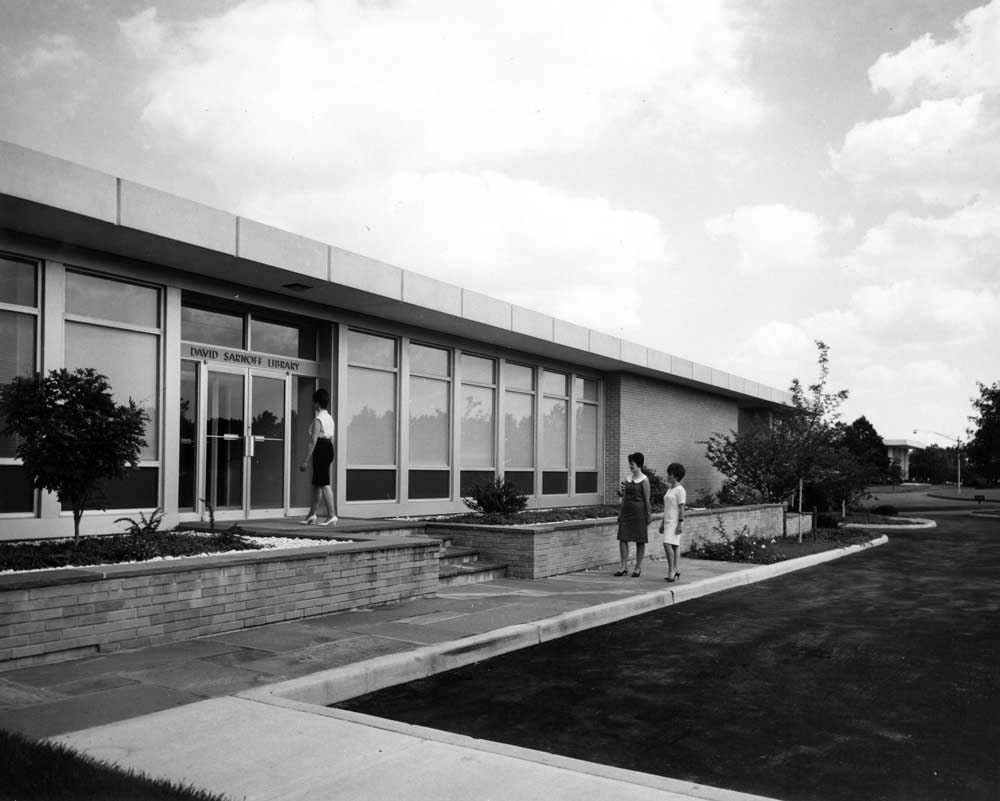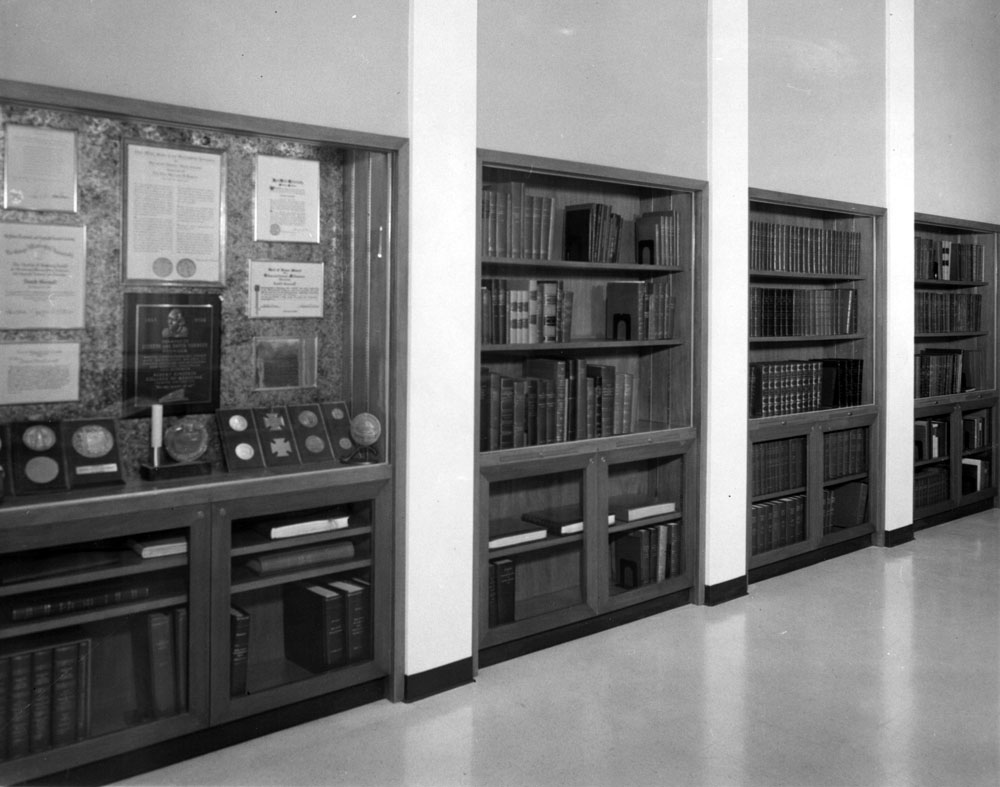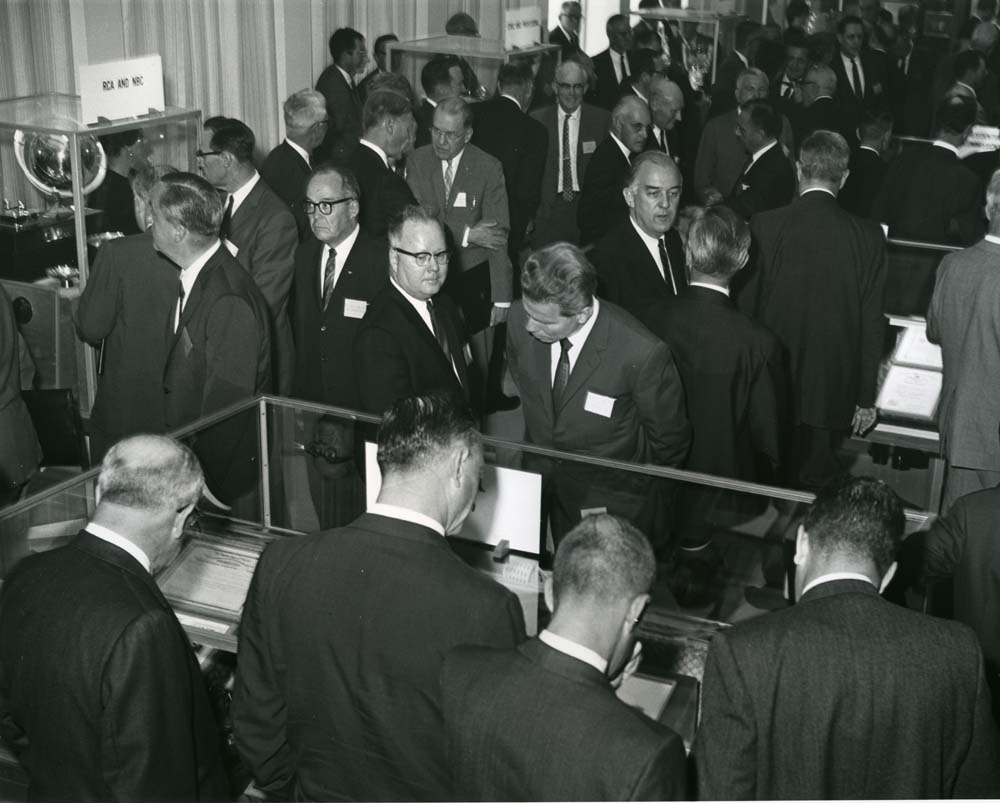
The first specific reference to what would become the David Sarnoff Library (pictured, right) comes from a March 5, 1951 letter from Sarnoff’s close associate Elmer E. Bucher:
It will be my pleasure to comply with the program outlined in your letter of the 8th with respect to the “David Sarnoff Collection”. You owe it to posterity…to place your papers and the biographical sketch of your career in the trust of some institution where they will be readily accessible. I consider them to be as important to an understanding of the development of communications, broadcasting and other branches of electronics as are the papers of Franklin D. Roosevelt to a comprehension of the American political scene during his occupancy of the White House, which now repose in the archives at Hyde Park, N.Y.
The biographical sketch is presumably a reference to the hagiography of Sarnoff that Bucher had started writing at least a decade earlier. It totaled sixty-two volumes when completed in 1962 and later became a centerpiece of the David Sarnoff Library.
Even before Bucher’s letter, Sarnoff’s staff had begun assembling his writings, speeches, awards, photographs, and publicity in bound volumes. Although it is not clear when this began, a clear procedure was in place by 1949. Sarnoff would select items from his own files and press clippings sent to him from RCA headquarters that he wanted to be included in the volume. His secretary, Ella Helbig, would then send the material and instructions to Harriet Fitzgerald at RCA headquarters.
Fitzgerald carefully arranged and labeled the material and sent it out for custom leather bindings or for framing. Sarnoff oversaw every step of this, including decisions on the colors of the bindings. The completed volumes and framed items would then be sent back to Sarnoff, who kept them in his home.
The first known involvement of staff from the David Sarnoff Research Center was on September 17, 1964, when Arthur N. Curtiss (head of Administration) and Cary J. King, Jr. (Manager of Laboratory Services) visited the Sarnoff residence in New York with representatives of the architectural firm of Bernhard, Ficke & Clarkson. They presented him with preliminary plans for exhibit facilities and reviewed the collection.
According to a memo from the architects:
General Sarnoff stated his concept of the proposed facility as being similar in character to the Roosevelt and Truman Libraries, both of which he has visited and studied. He considers that this facility should be a repository of information and history of the electronics industry as he has been associated with it, rather than a mere display of his own personal mementos and honors.
The architects and King dutifully visited the Roosevelt Library, but reported that they did not feel it was a particularly helpful example.
On January 15, 1965, RCA Laboratories submitted a proposal to RCA headquarters for the allocation of $650,000 for the construction of an 8,000 square-foot, two-story addition to the David Sarnoff Research Center’s northwest wing. To be called Sarnoff Hall, the addition included 1,700 square-feet of exhibit space for the Sarnoff Collection. Interestingly, the same proposal also requested $2,005,000 for the construction of the second phase of the southwest wing to provide 52,000 square-feet of additional laboratory and administration workspace.
The proposal was approved and Sarnoff Hall was constructed during 1965-1966. At Sarnoff’s insistence, the name of the building was soon changed to the David Sarnoff Library.

During this time, C. David Blake, initially a consultant for the architects and then the first Curator of the David Sarnoff Library, supervised the planning of the library and the November 1966 shipments of the bulk of the collection to Princeton. Blake resigned due to illness in April 1967 and Cary J. King, Jr. assumed most of his responsibilities. King was officially appointed as curator in August 1967, following his retirement from RCA. Along with his secretary, Dorothy Camfield, King would be the guiding force for the library’s early period.
Throughout 1966 and 1967, Sarnoff frequently visited the library to inspect the progress being made. During his visits, he would give specific instructions on a variety of issues, from the placement of items to the material for constructing cabinet doors.

Opening of the David Sarnoff Library, 1967
The David Sarnoff Library was officially dedicated on September 28, 1967, the first day of the four-day 25th anniversary celebration for RCA Laboratories. With over 700 volumes and hundreds of artifacts and framed items, the library represented a remarkable tribute to David Sarnoff and, he hoped, ensured his place in history.
Dan Michelson is the Sarnoff Project Archivist in the Manuscripts and Archives Department at Hagley.
